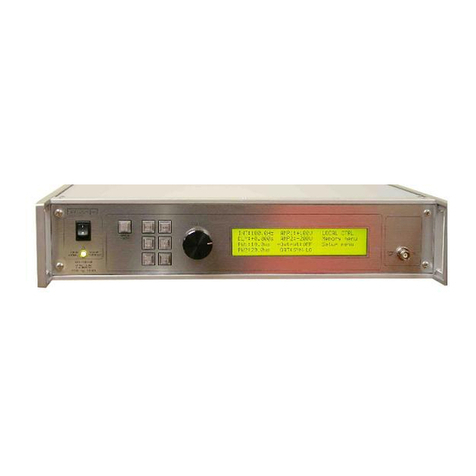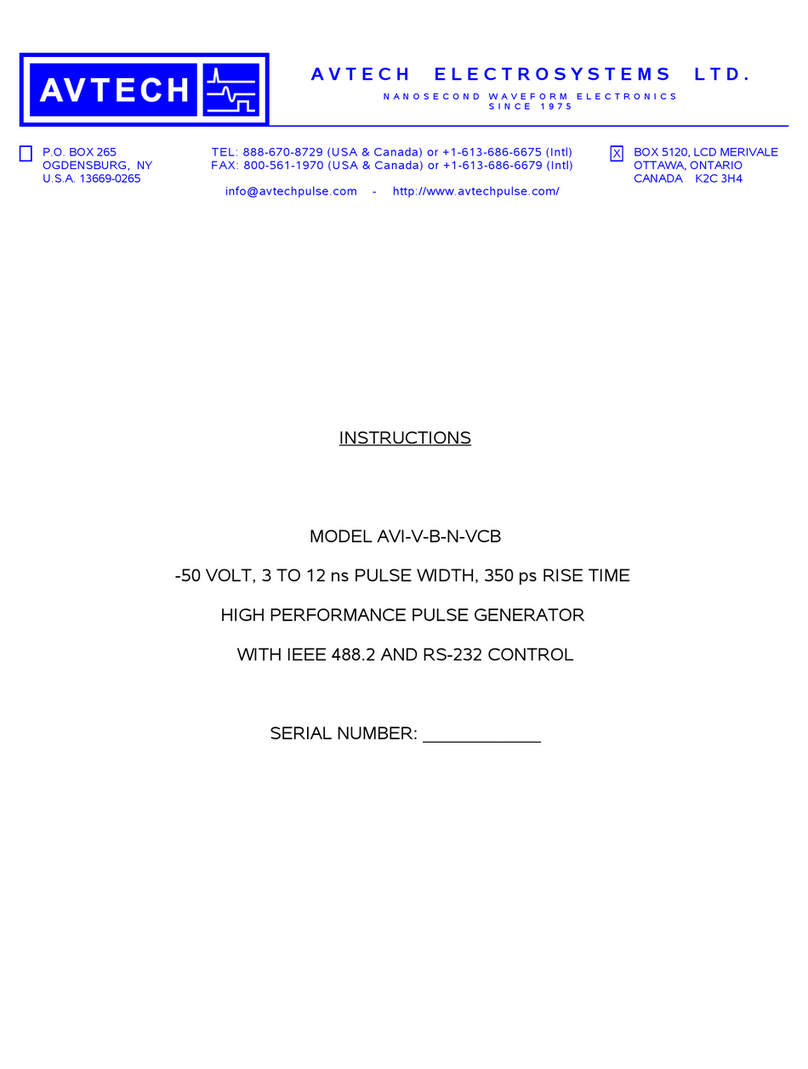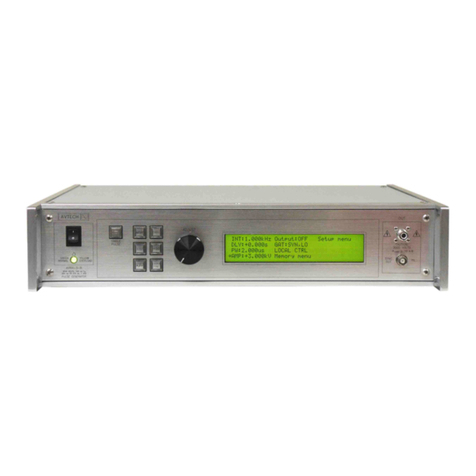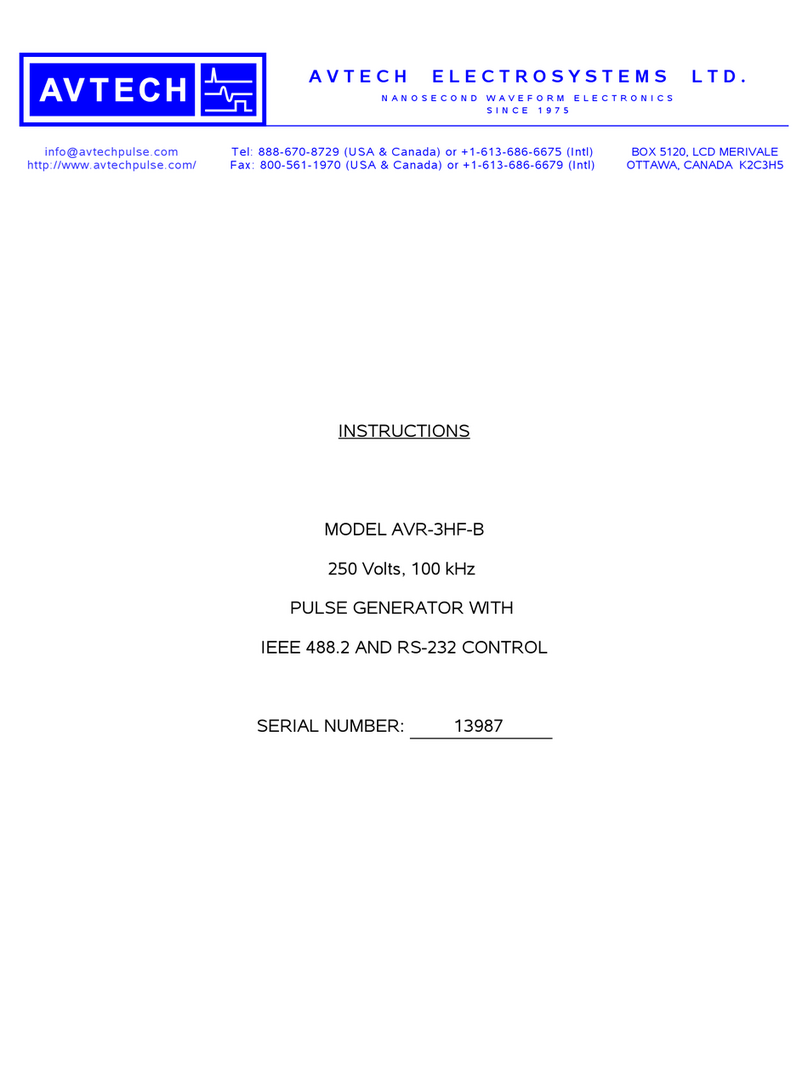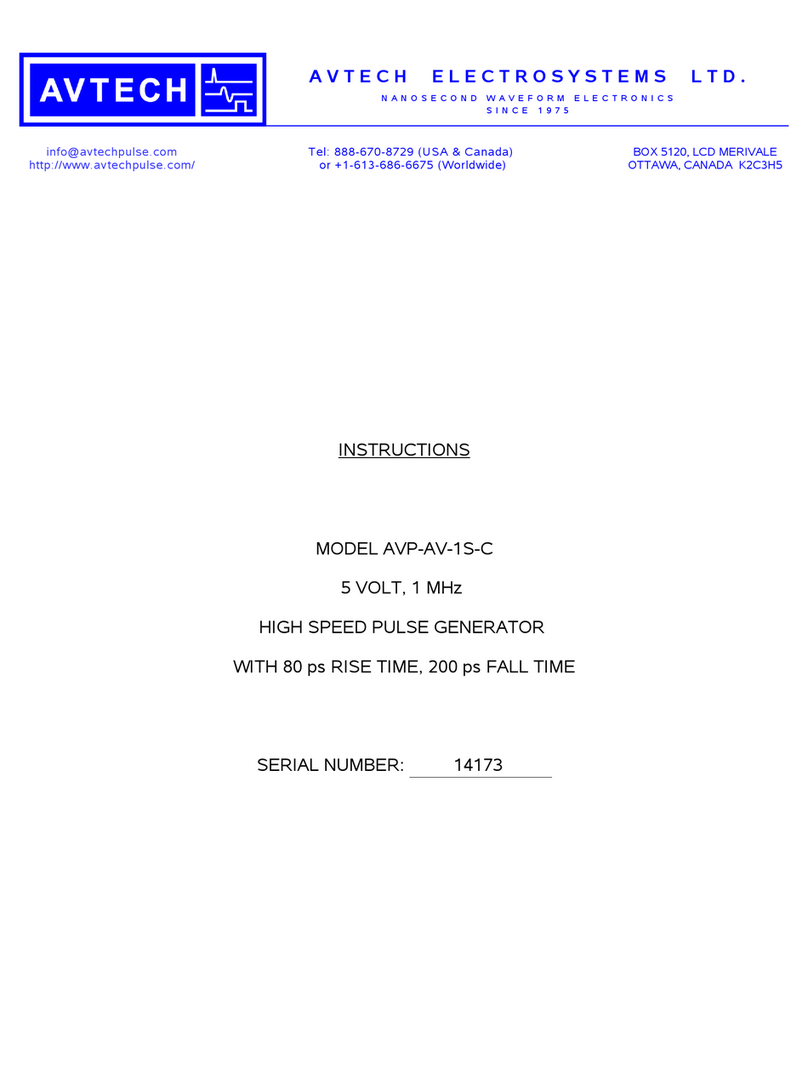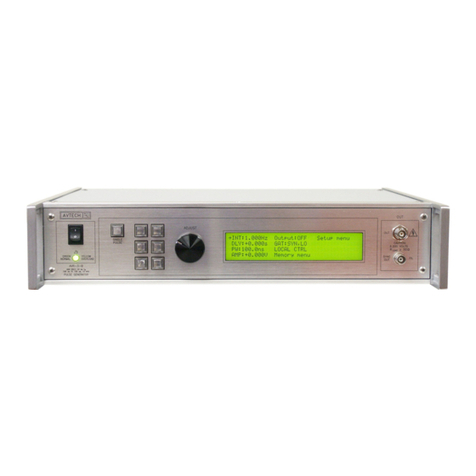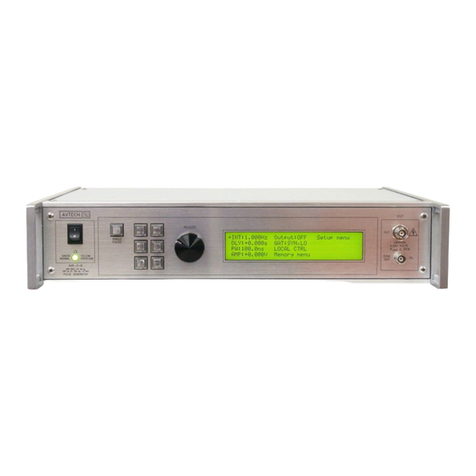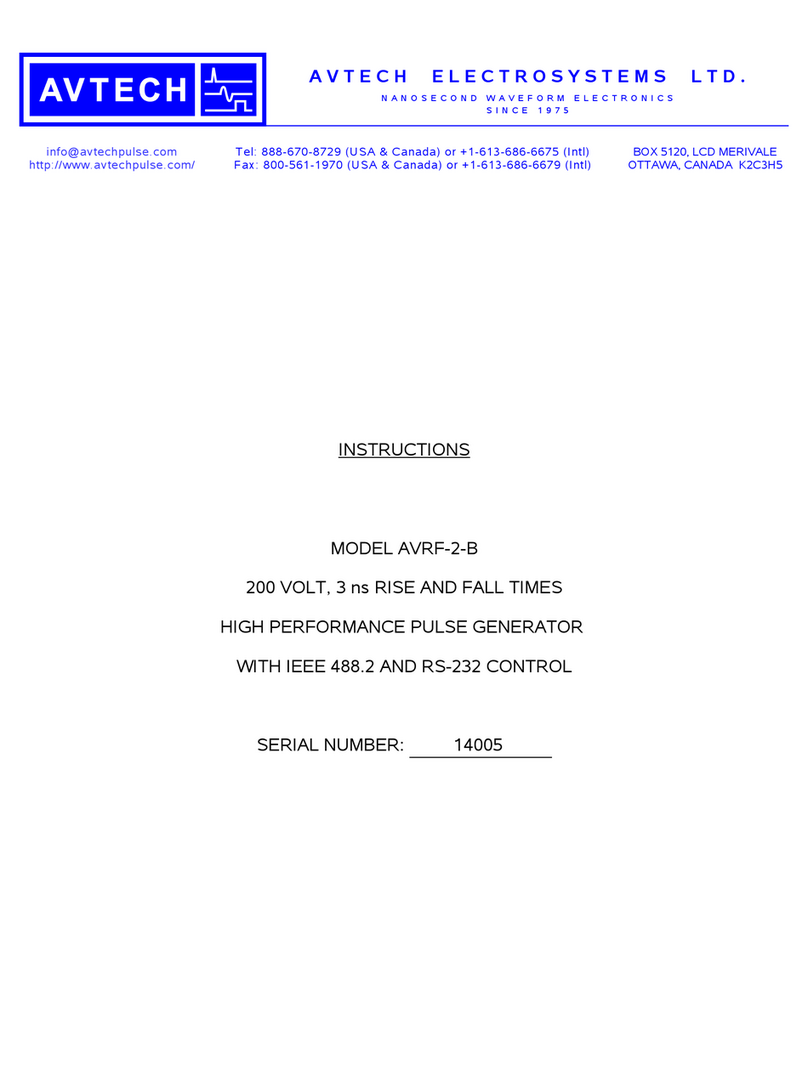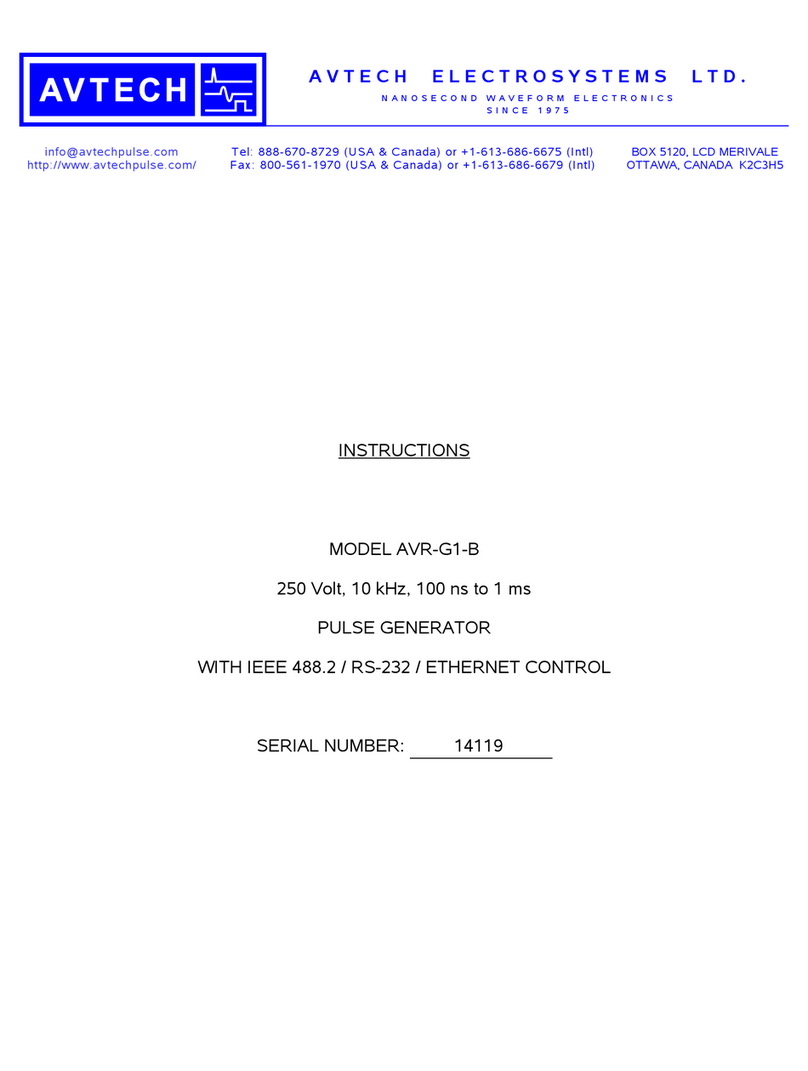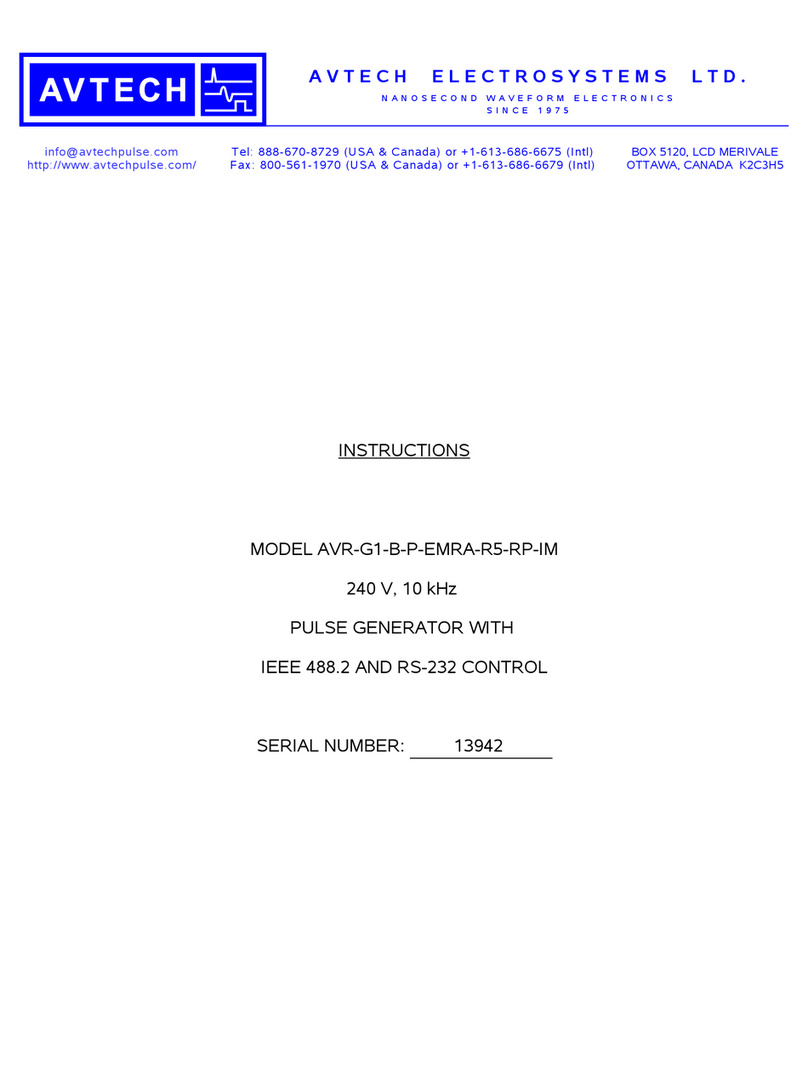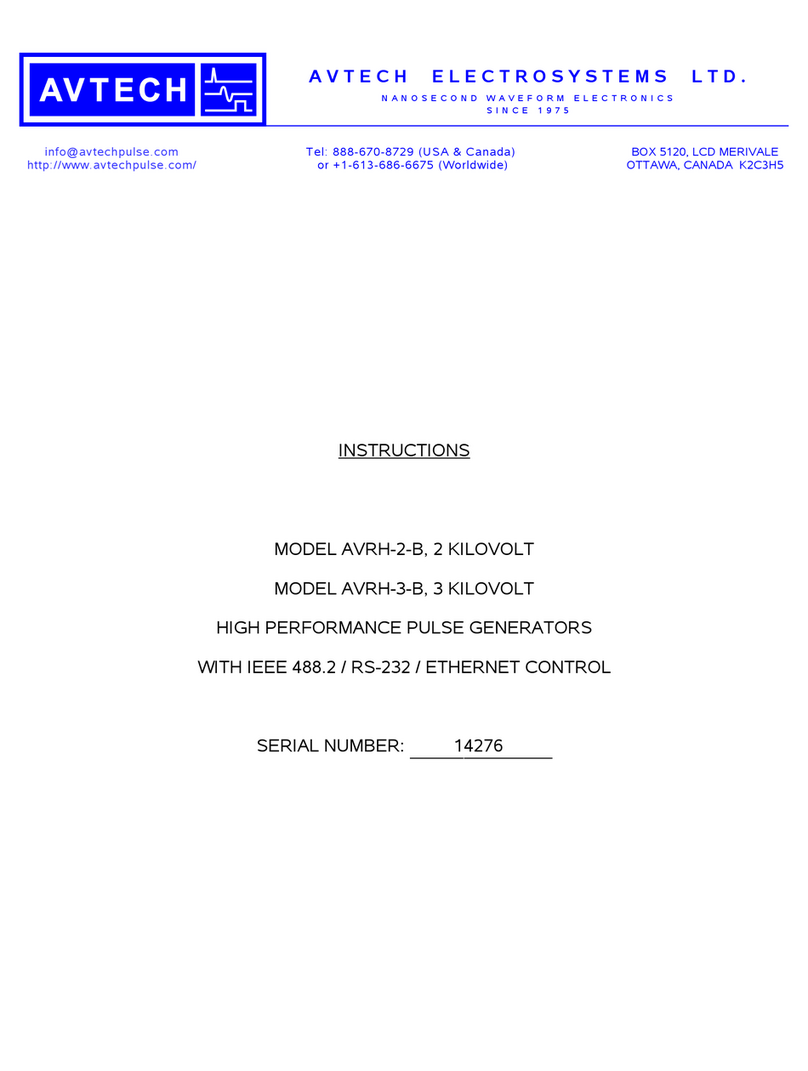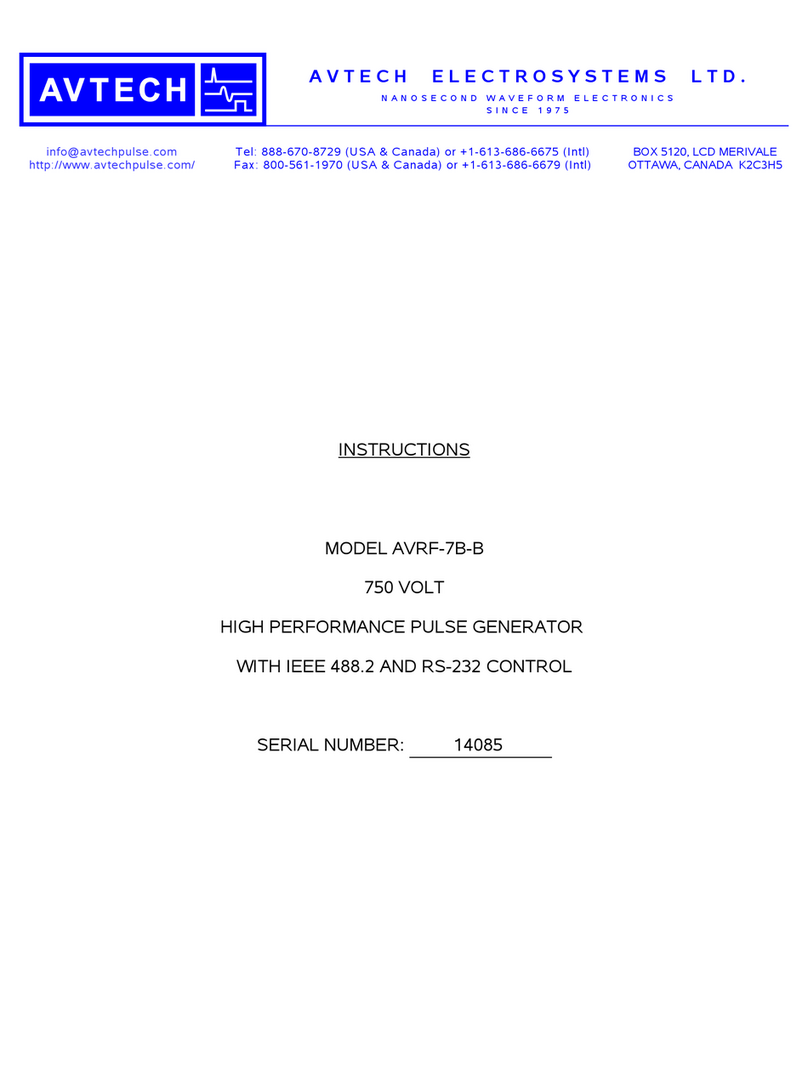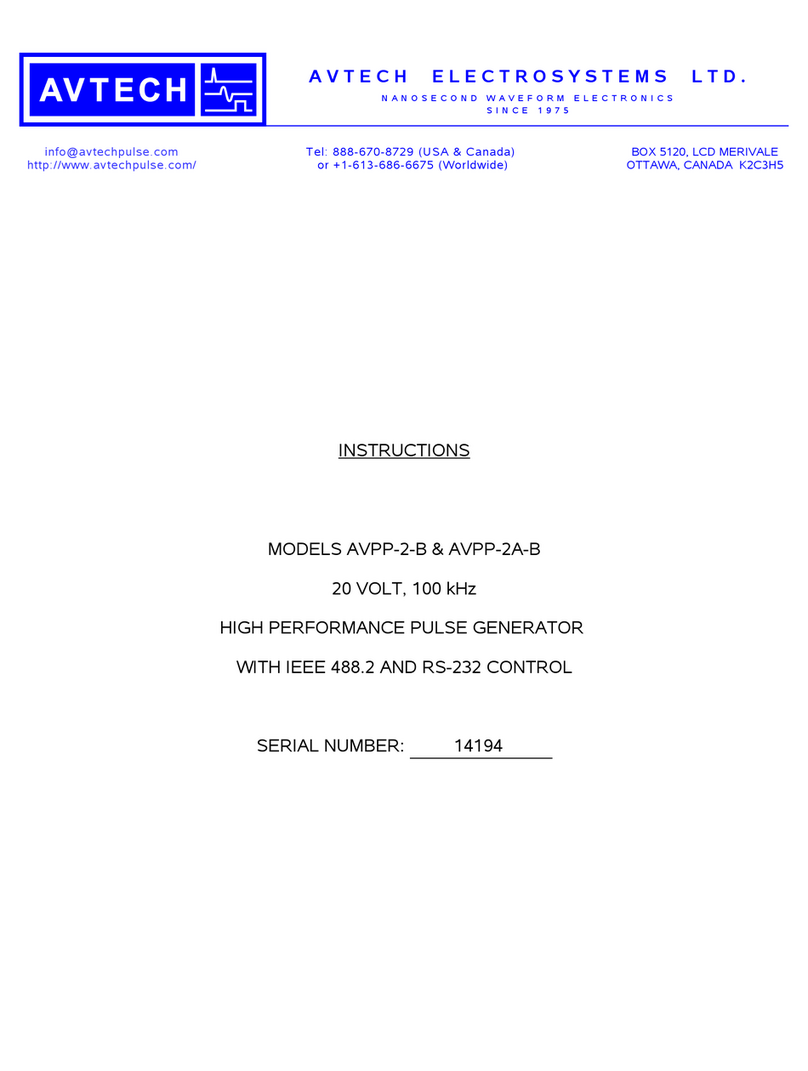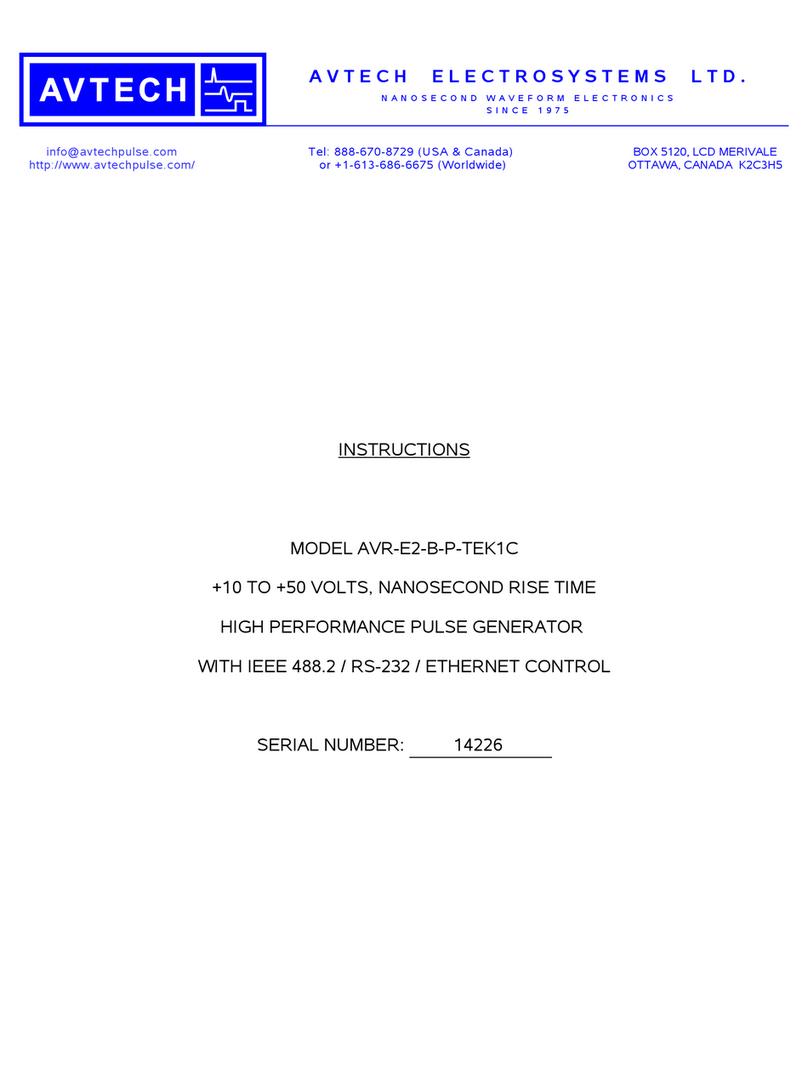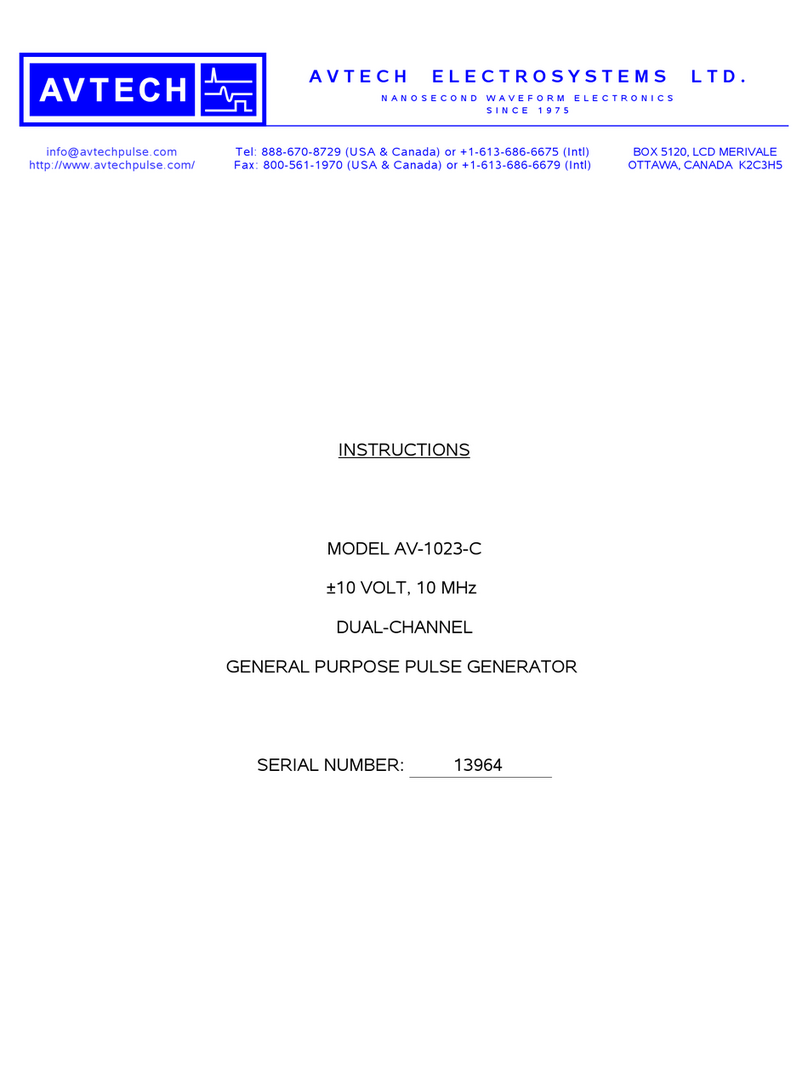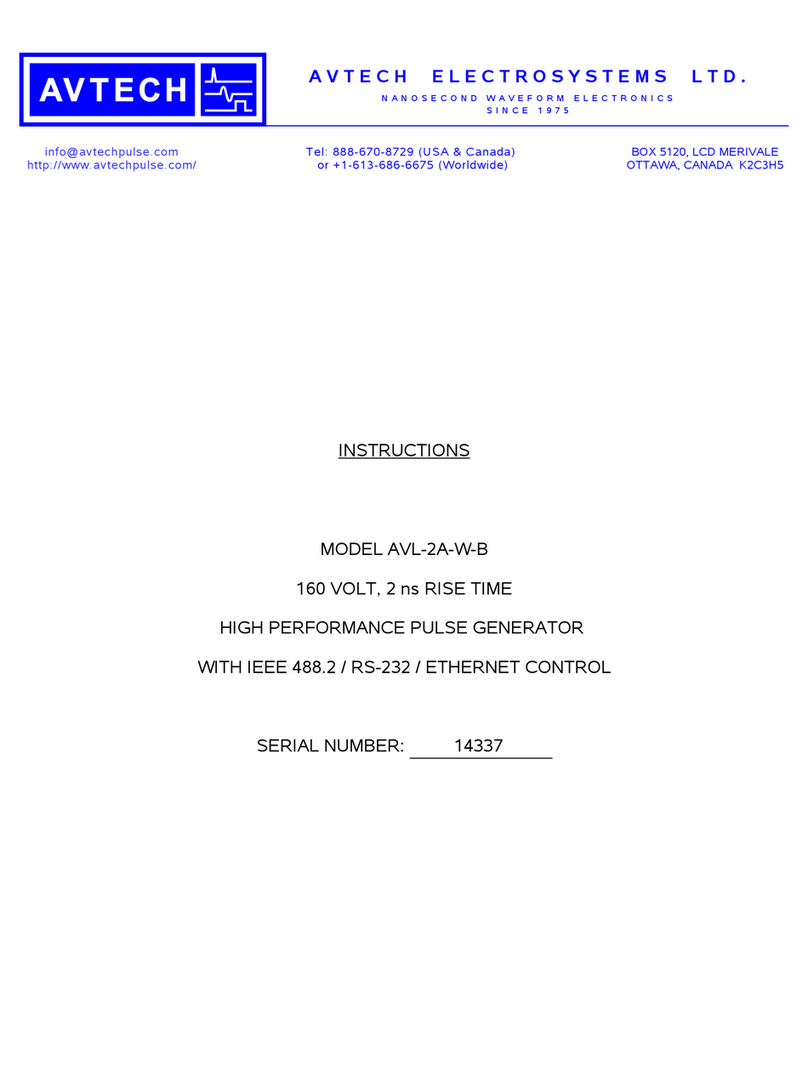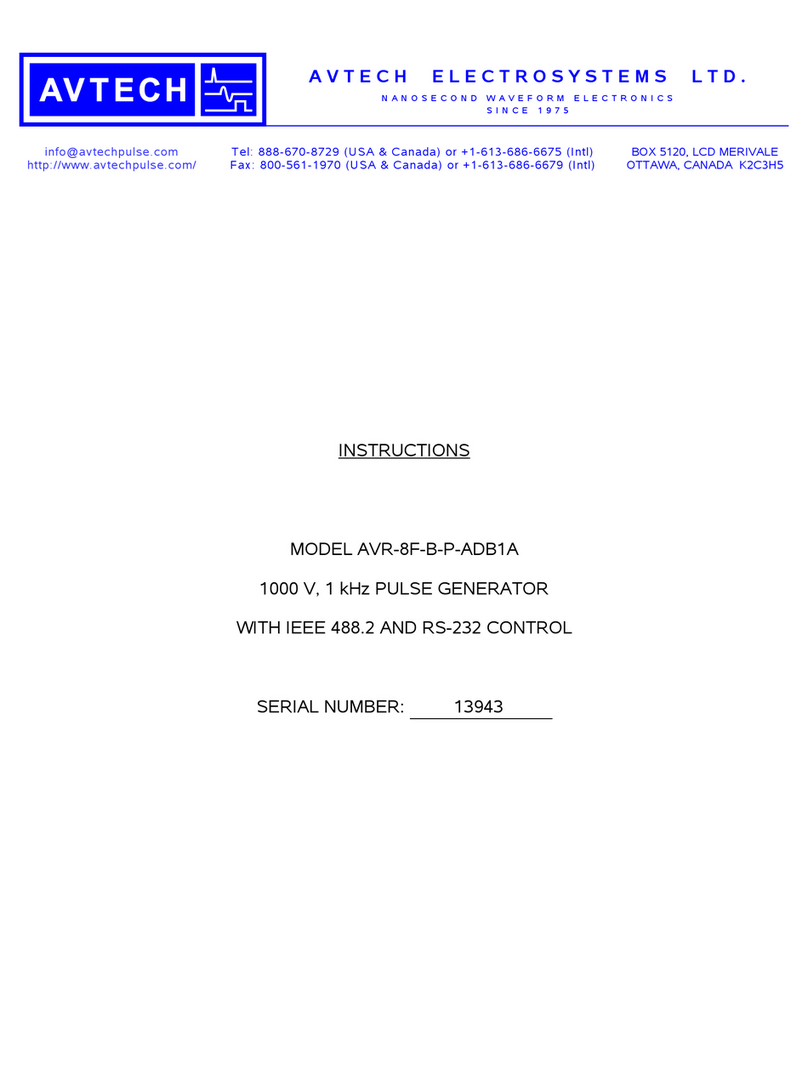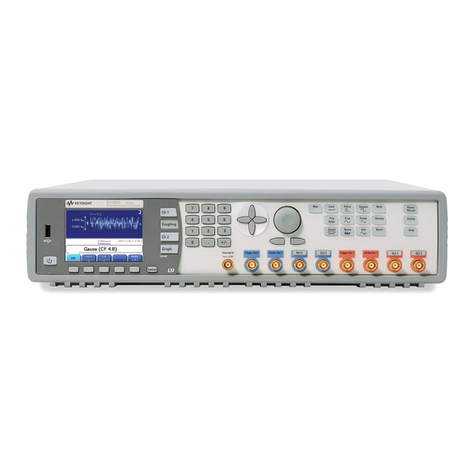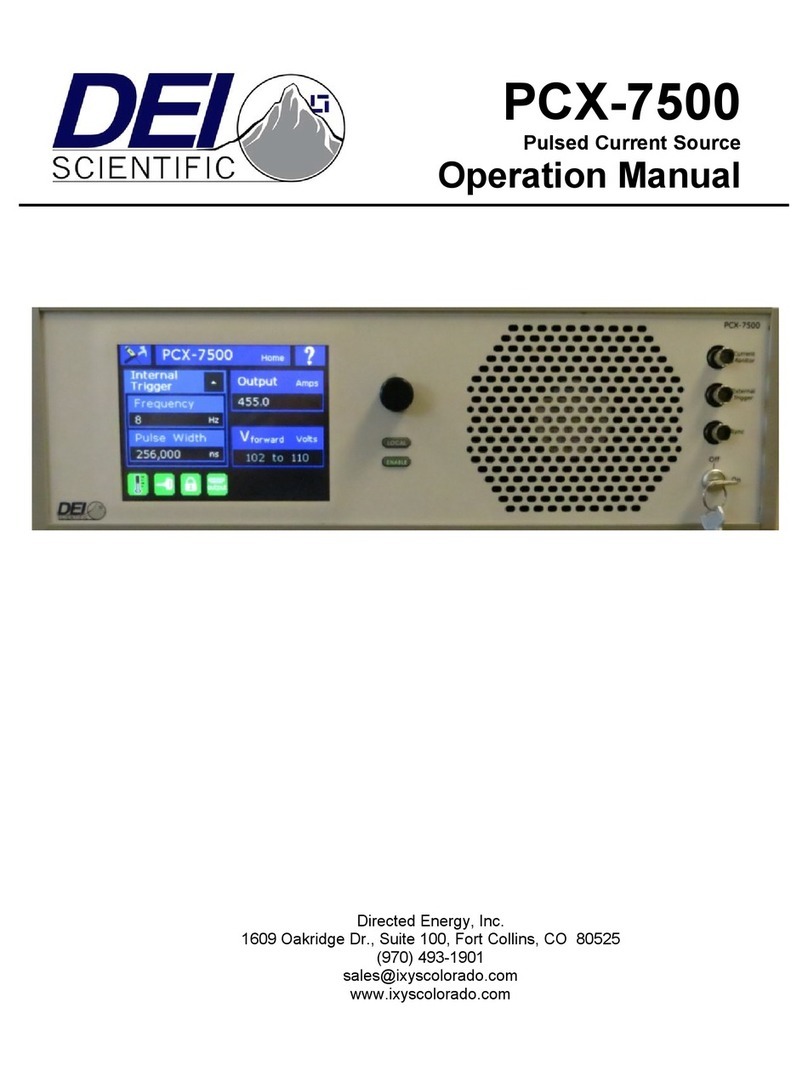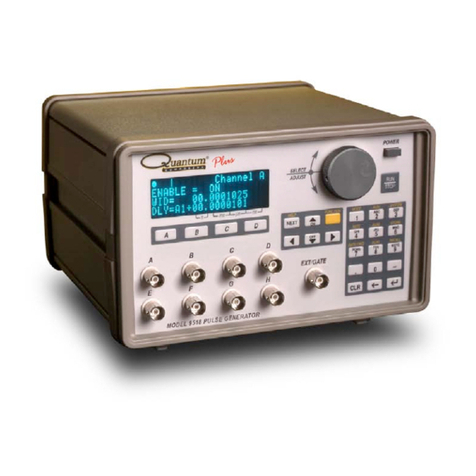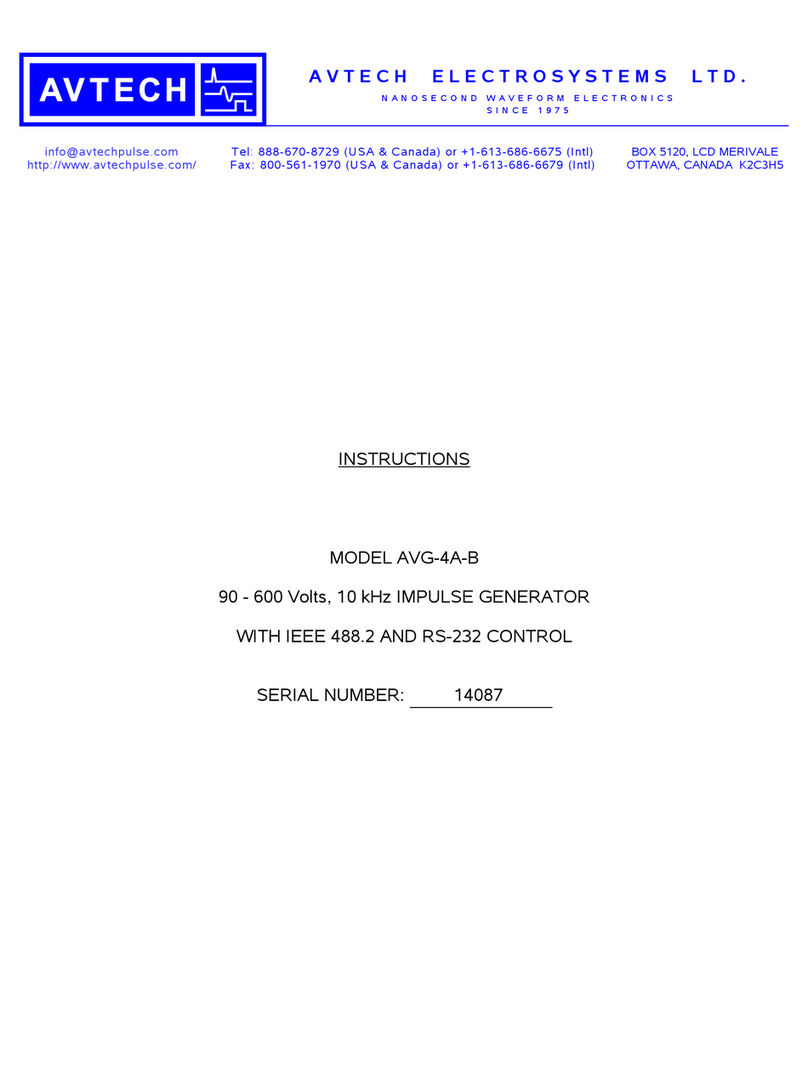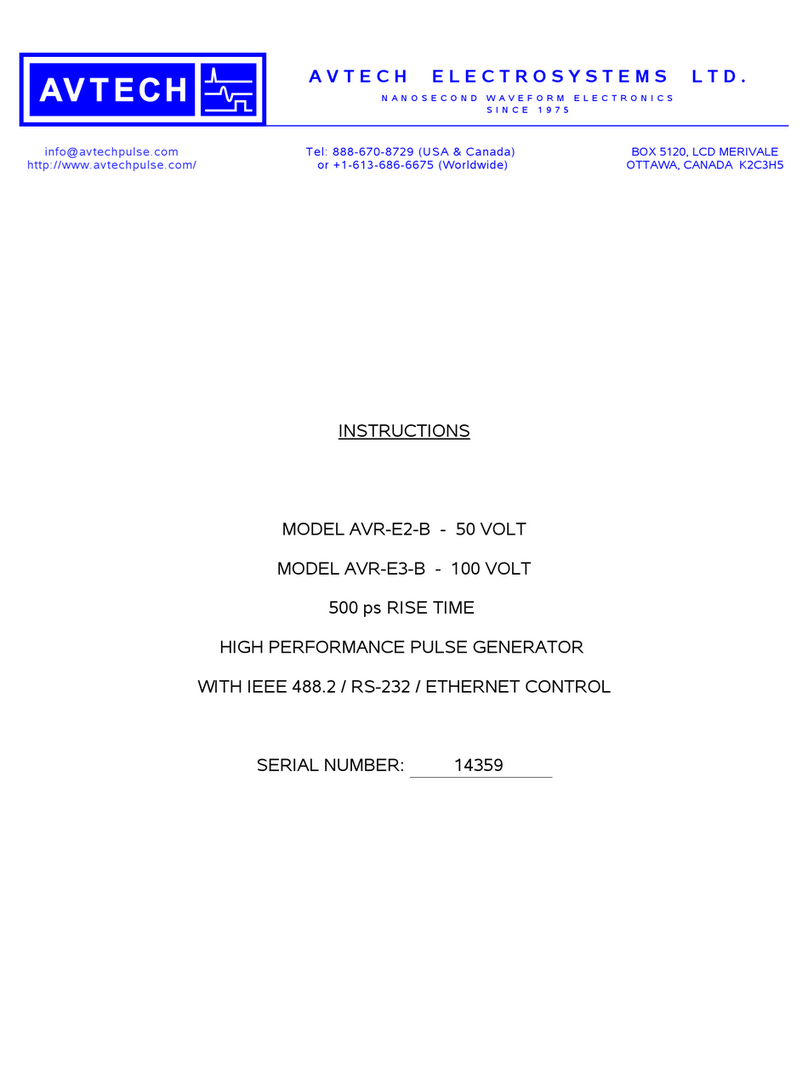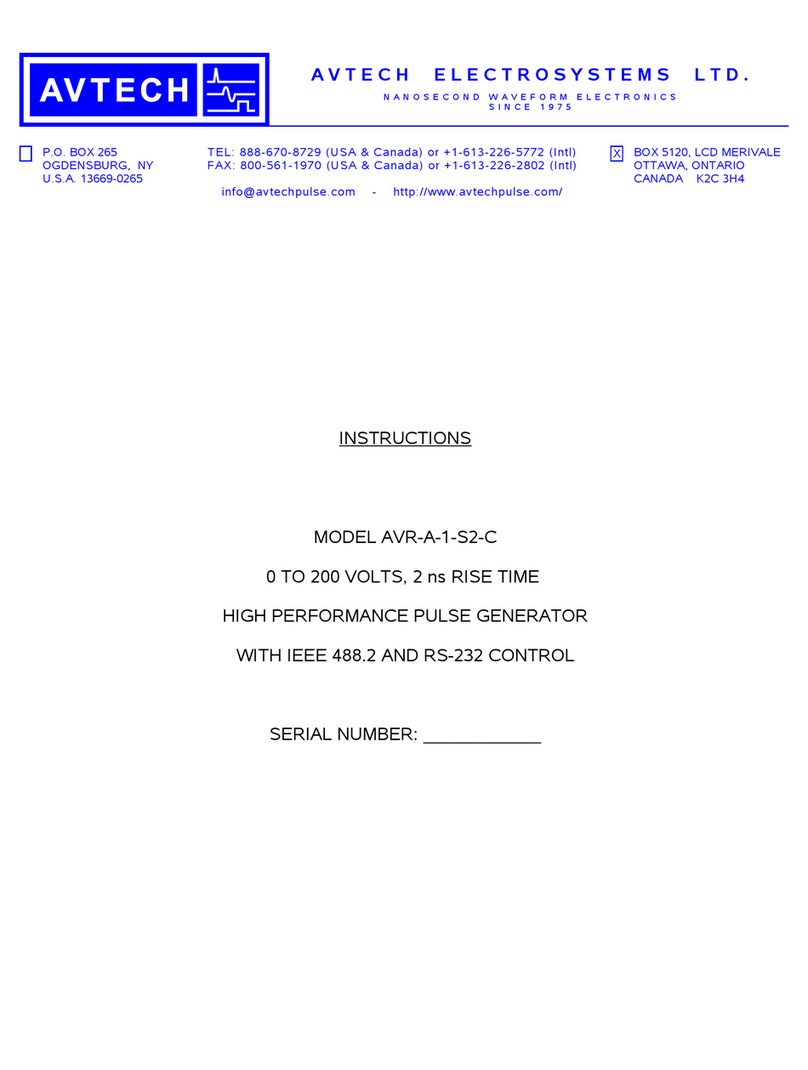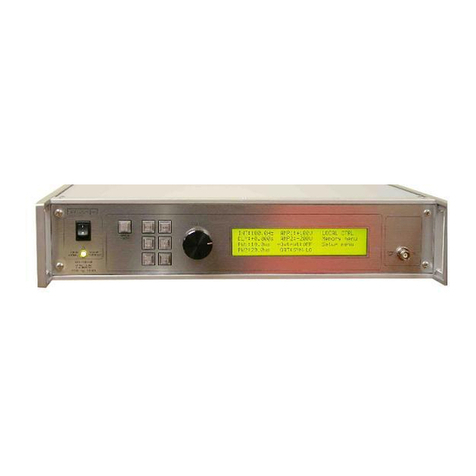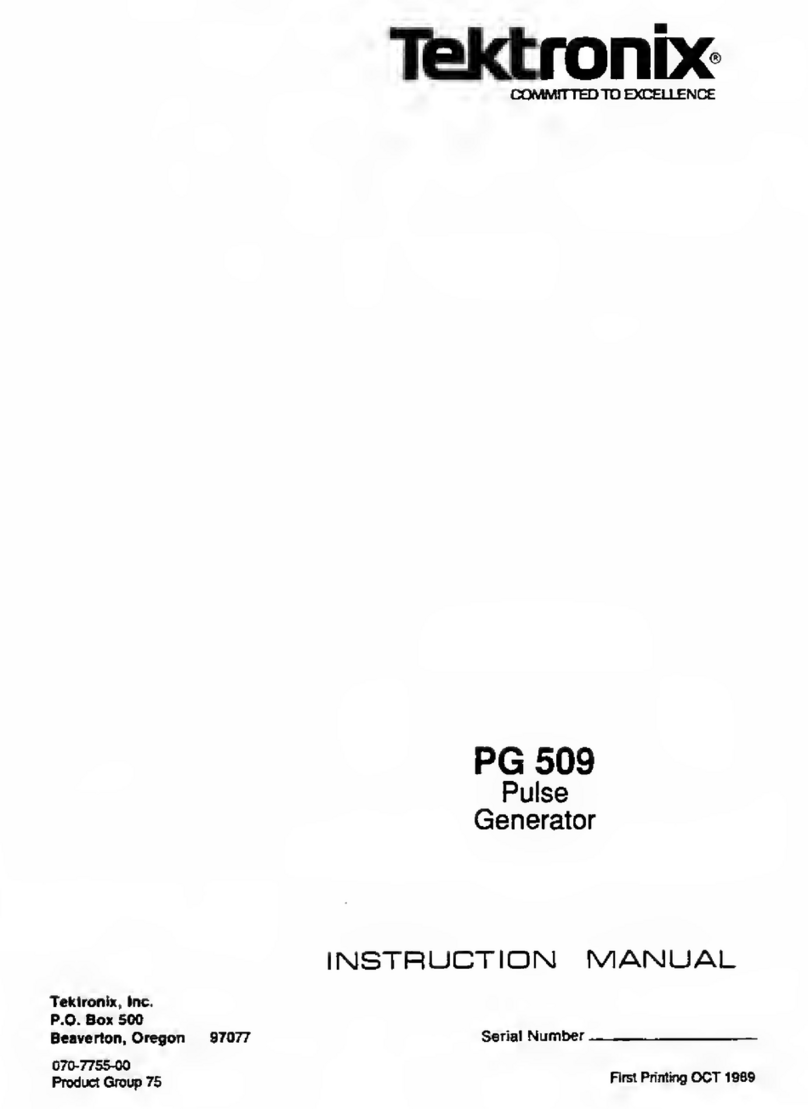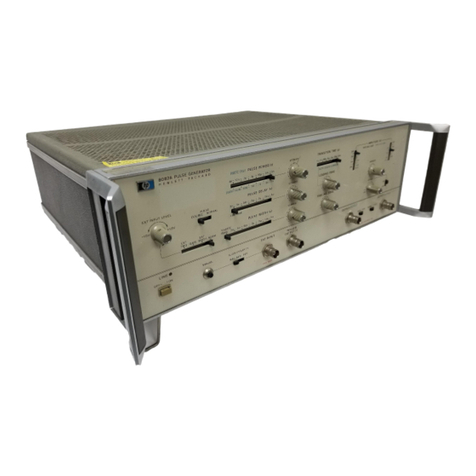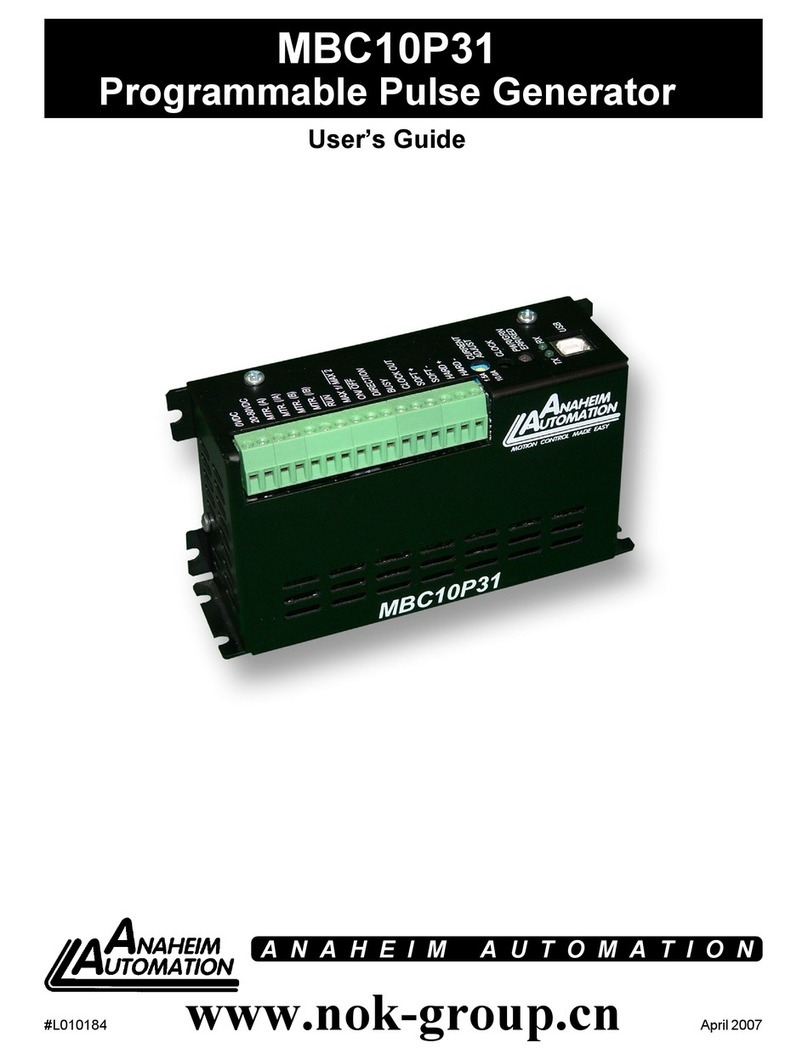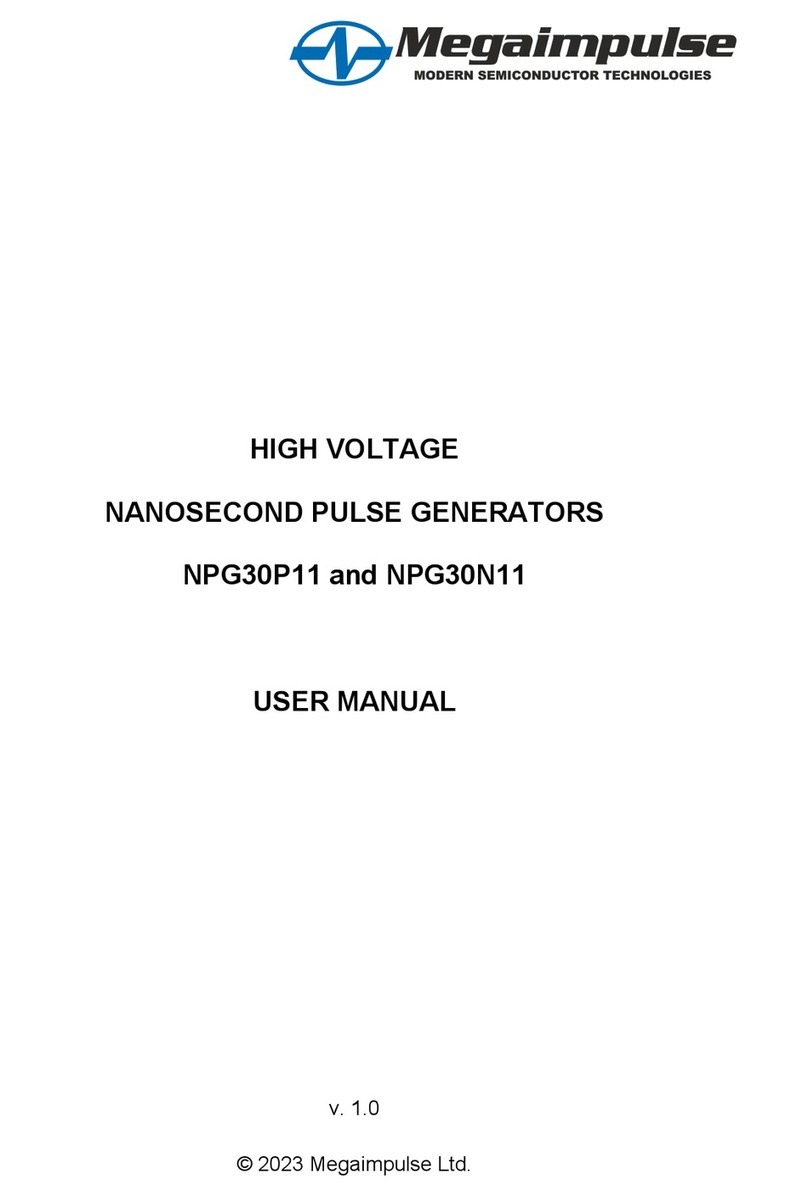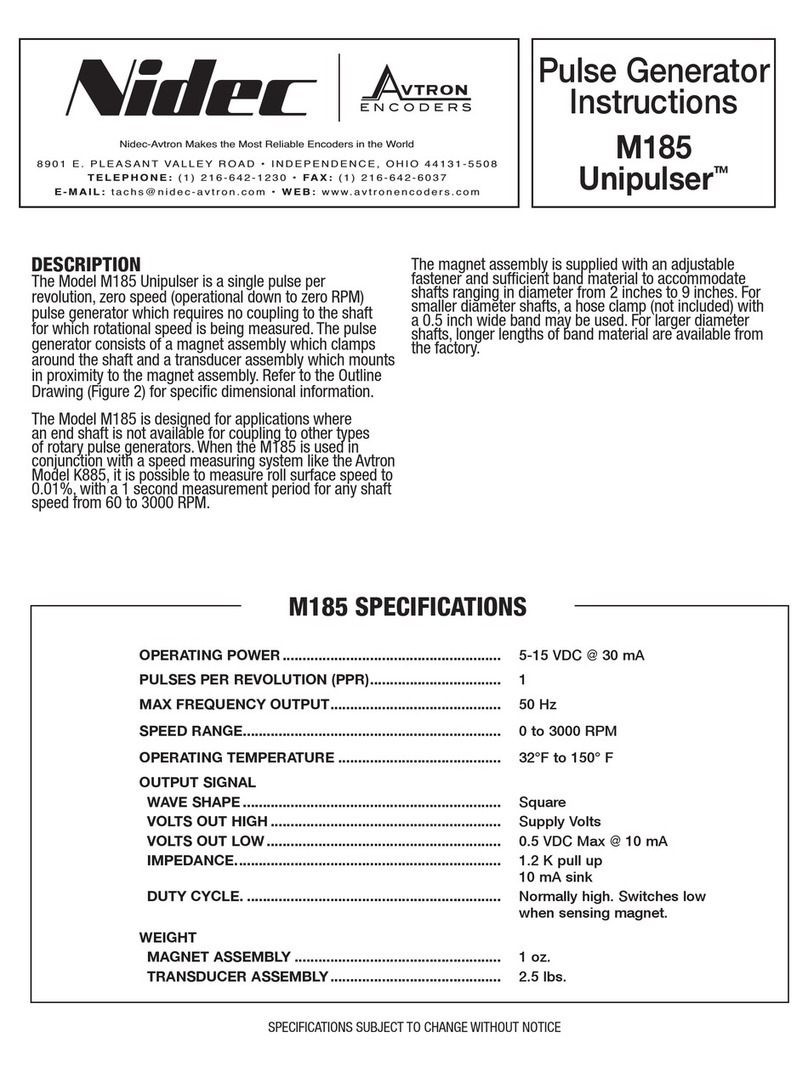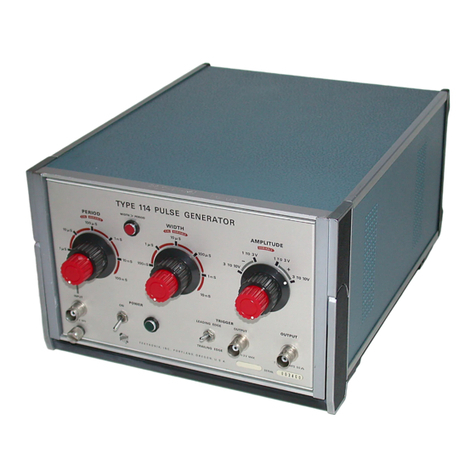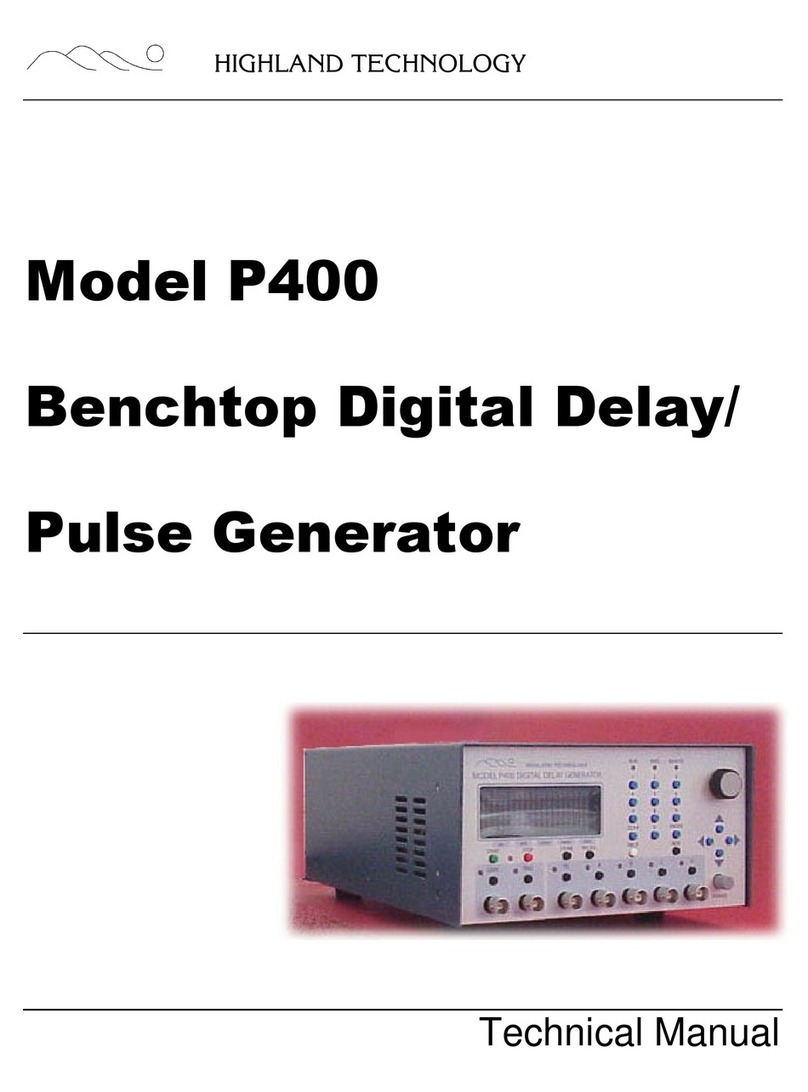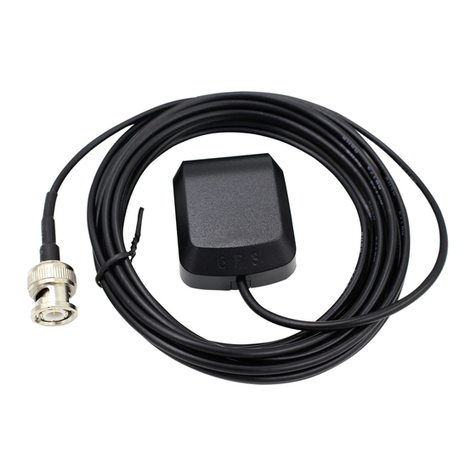
SPECIFICATIONS
Model: AVR-G5-B1
Maximum amplitude9: 440 Volts (peak to peak)
Basic waveform: Bipolar pulse (refer diagrams in this manual)
Pulse width (FWHM): 200 ns to 0 5 s
Load impedance: ≥ 100 kΩ
Output impedance7: 50 Ω
Rise, fall times (20%-80%)7: ≤ 20 ns
PRF: 1 Hz - 100 kHz
Maximum duty cycle: 80 %
Polarity3: Positive and negative
GPIB and RS-232 control1: Standard on -B units
LabView Drivers: Check http://www avtechpulse com/labview for availability and downloads
Ethernet port, for remote
control using VXI-11 3, ssh,
telnet, web:
Optional4 Recommended as a modern alternative to GPIB / RS-232
See http://www avtechpulse com/options/vxi for details
Settings resolution: The resolution of the timing parameters (pulse width, delay, period) varies, but is always better
than 0 15% of (|set value| + 20 ns) The amplitude resolution is < 0 1% of the maximum amplitude
Settings accuracy: Typically ± 3% (plus ±1V or ± 2 ns) after 10 minute warmup For high-accuracy applications
requiring traceable calibration, verify the output parameters with a calibrated oscilloscope10
Burst mode: Optional8 Generates 1-500 pulses per trigger event See http://www avtechpulse com/options/br
Propagation delay: ≤ 100 ns (Ext trig in to pulse out)
Jitter: ± 100 ps ± 0 03% of sync delay (Ext trig in to pulse out)
Trigger modes: Internal trigger, external trigger (TTL level pulse, > 10 ns, 1 kΩ input impedance), front-panel
“Single Pulse” pushbutton, or single pulse trigger via computer command In the external trigger
mode, the pulse width may be set by the instrument, or it may be set to track the input pulse width
Variable delay: Sync to main out: 0 to 1 0 seconds, for all trigger modes (including external trigger)
Sync output: > +3 Volts, > 50 ns, will drive 50 Ohm loads
Gate input: Synchronous or asynchronous, active high or low, switchable Suppresses triggering when active
Connectors: Out, Trig, Sync, Gate: BNC
Power requirements: 100 - 240 Volts, 50 - 60 Hz
Dimensions (H x W x D): 100 mm x 430 mm x 375 mm (3 9” x 17” x 14 8”)
Chassis material: Aluminum frame and handles, gray vinyl on aluminum cover plates
Rack-mount kit: Optional Add -R5 to the model number
Temperature range: +5°C to +40°C
1) -B suffix indicates IEEE-488 2 GPIB and RS-232 control of amplitude, pulse width or duty cycle (as appropriate), pulse repetition frequency, and
delay (See http://www avtechpulse com/gpib)
2) When triggered externally, the pulse width can be set by the pulse instrument controls, or it may be set to track the input trigger pulse width
3) Indicate desired polarity by suffixing model number with -P or -N (i e positive or negative) or -PN for dual polarity option
4) Add the suffix -VXI to the model number to specify the Ethernet port
5) To generate a 0 to ±50V offset internally, add the suffix -OT to the model number When generating a pulse with positive amplitude, the offset plus
amplitude must remain between 0 and +250V, and when generating a pulse with negative amplitude, the offset plus amplitude must remain between
0 and -250V
6) This is the resistance in series with the output, internally The 50 Ohm series resistance provides transmission line back-matching to absorb
reflections from the load This is not the same as the load impedance The AVR-G series can not drive 50 Ohm loads
7) For a non-capacitive load The 50 Ohm output impedance will cause rise and fall time degradation if the load has capacitance, governed by the RC
time constant
8) Add the suffix -BR to the model number to specify the burst mode option See http://www avtechpulse com/options/br for details about this option Not
available on the AVR-G5-B model
9) The minimum useful amplitude is 5% of the maximum amplitude For lower amplitudes, consider using an external resistor divider
10)These instruments are provided with a basic calibration checksheet, showing a selection of measured output parameters These measurements are
performed with equipment that is calibrated on a regular basis by a third-party ISO/IEC 17025:2005 accredited calibration laboratory However,
Avtech itself does not claim any accreditation For applications requiring traceable performance, use a calibrated measurement system rather than
relying on the accuracy of the pulse generator settings
7
